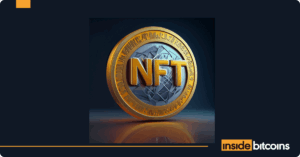Exploring CETUS Tokenomics: Unlocking Value in Innovative Architecture

Cetus Protocol: The Heart of Sui’s Expanding DeFi Ecosystem
As the decentralized finance (DeFi) landscape on the Sui network continues to flourish, Cetus Protocol stands out as a central player, evolving through community-driven governance. With innovative features such as intent-based trading, automated vaults, and multichain swaps, Cetus is instrumental in transforming Sui into a dynamic and interconnected DeFi environment.
- Overview of Cetus Protocol
- Metrics of Adoption and Growth
- Technical Insights into Cetus Protocol
- Smart Contract Architecture on Sui
- Concentrated Liquidity AMM Design
- Fee Structure and Optimization Mechanisms
- Oracle Functionality and Cross-Chain Integration
- CETUS Tokenomics and Incentives
- CETUS Token Utility and Governance Role
- xCETUS: Staked Escrowed Token and Governance
- Cetus’s Role in the Sui Ecosystem
Overview of Cetus Protocol
Cetus Protocol is a groundbreaking decentralized exchange (DEX) and concentrated liquidity automated market maker (AMM) operating on the Sui network, with additional deployment on Aptos. As one of the pioneering DEXs in Sui’s DeFi scene, Cetus serves as a vital liquidity hub and infrastructure element for the network. Its primary goal is to create a robust and adaptable liquidity network that enhances on-chain trading efficiency for all users and assets.
In practice, Cetus provides a comprehensive suite of DeFi tools, including high-capacity swap pools with concentrated liquidity, a built-in aggregator, and a launchpad, all aimed at maximizing liquidity utilization and improving user experience.
As the leading DEX on Sui, Cetus plays a crucial role in the ecosystem by facilitating deep liquidity for native tokens, allowing traders to execute swaps with minimal slippage and enabling new projects to gain liquidity through its pools and Asset Launch launchpad. Essentially, Cetus has become a foundational DeFi protocol on Sui, streamlining on-chain trading and attracting a growing user base with its innovative offerings.
Cetus is not merely a standalone DEX; it comprises a suite of interoperable modules within Sui’s DeFi framework. Its “Super Aggregator” feature sources liquidity from all major Sui platforms, ensuring users receive the best possible prices.
The Intent Trading module allows for advanced order types, such as on-chain limit orders and automated dollar-cost averaging (DCA), executed directly through smart contracts. This extensible “Liquidity as a Service” approach enables other developers and decentralized applications (dApps) to seamlessly integrate Cetus’s liquidity and build upon it using software development kits (SDKs). Overall, Cetus’s extensive toolkit and deep liquidity have solidified its position as an essential component of Sui’s emerging DeFi ecosystem.
Metrics of Adoption and Growth
Since its inception, Cetus Protocol has gained substantial traction within the Sui network, underscoring its significance in the ecosystem’s expansion. By mid-2025, Cetus had accumulated over $236 million in total value locked (TVL), making it the largest DeFi protocol on the chain.
Daily trading volumes frequently reach hundreds of millions of dollars, with figures around $295 million in 24-hour volume, indicating high user engagement and liquidity depth. Cumulatively, Cetus has facilitated over $57 billion in trading volume across 144 million trades, showcasing impressive scale for a relatively new blockchain. The platform has also attracted a diverse user base, with more than 15 million on-chain accounts interacting with Cetus’s pools or swaps.
These statistics highlight Cetus’s dominance within the Sui ecosystem. Following a security incident in May 2025, Cetus demonstrated resilience by quickly relaunching and restoring liquidity with the support of the community and the Sui Foundation. Within weeks, over 50% of the lost TVL was recovered, and Cetus regained its status as the top DEX on Sui. The Sui community even approved an on-chain upgrade to freeze and recover the stolen funds, showcasing the ecosystem’s commitment to Cetus’s stability.
By mid-2025, Cetus’s TVL surpassed pre-exploit levels, reflecting strong user trust and continued growth. In summary, Cetus Protocol has established itself as the de facto liquidity foundation for Sui’s DeFi landscape, supported by robust usage metrics and a roadmap aimed at further expanding the Sui-Aptos Move-based DeFi universe.
Technical Insights into Cetus Protocol
Smart Contract Architecture on Sui
Cetus Protocol is built on a series of autonomous smart contracts deployed on the Sui network, implementing an Automated Market Maker (AMM) optimized for Sui’s object-centric model. Unlike Ethereum’s account-based system, Sui treats assets and contract states as objects, enabling parallel execution and granular control.
Cetus capitalizes on this architecture by minting each liquidity position as a unique non-fungible token (NFT), known as Position NFT, which records details such as token pair, tick range, and liquidity amount. These NFTs serve as proof of ownership and can be transferred or staked in other contracts, enhancing composability.
Inspired by Uniswap v3’s architecture, this design benefits from Sui’s strict resource control, which prevents duplication or loss. Cetus employs a factory-contract architecture where a central Factory deploys Pool contracts for each token pair and fee tier. Each Pool operates independently, allowing multiple trades and liquidity actions to be processed simultaneously, thereby boosting throughput and reducing latency.
Sui’s safety features ensure reliable accounting of tokens and predictable behavior, even during complex interactions. By fully leveraging Sui’s unique architecture, Cetus delivers a secure, high-performance AMM framework that supports scalable and efficient DeFi infrastructure on-chain.
Concentrated Liquidity AMM Design
Cetus Protocol utilizes a Concentrated Liquidity Market Maker (CLMM) model to enhance capital efficiency. Unlike traditional AMMs that distribute liquidity across an infinite price range, Cetus allows liquidity providers (LPs) to concentrate their liquidity within specific ranges, making their capital more effective and earning higher fees. For instance, in a USDC/USDT pool, an LP can target a narrow range like 0.995–1.005, ensuring that most trades utilize their liquidity.
When the market price moves outside this range, the position becomes inactive but remains intact until re-entered. LPs can establish multiple positions across various ranges to implement tailored strategies. Cetus employs a tick-based system for price granularity, with pools offering six fee tiers (0.01% to 2%). Each tier corresponds to a separate pool, allowing the market to self-select between low-slippage swaps or higher rewards for more volatile assets.
A notable feature is range orders, which function as on-chain limit orders. LPs can provide liquidity on one side of the price (e.g., only token A) and effectively “sell high” or “buy low” while earning swap fees. This combines automated trading with capital efficiency, offering a centralized exchange-like experience in a fully decentralized environment.
Fee Structure and Optimization Mechanisms
Every swap on Cetus incurs a fee based on the pool’s tier (e.g., 0.05%), with 80% allocated to active LPs and 20% directed to the protocol treasury. Fees are distributed only to LPs whose ranges encompass the current price, rewarding those providing genuine liquidity. LPs can select from six fee tiers ranging from 0.01% to 2%, allowing pools to self-regulate: low-fee tiers attract volume for stable pairs, while higher tiers compensate for riskier assets.
Unlike typical DEXs that reward liquidity size, Cetus employs a fee-based liquidity mining model. CETUS tokens are fairly distributed based on the actual fees a position generates, discouraging idle capital and ensuring incentives are directed toward productive LPs, thereby improving capital efficiency and minimizing unnecessary emissions.
To simplify liquidity management, Cetus offers Vaults that automate rebalancing and fee compounding. Its Intent Trading module enables automated strategies like DCA or limit orders, executed entirely on-chain. Sui’s low-cost, high-speed infrastructure makes these advanced features viable.
Lastly, Cetus includes a Swap Aggregator that sources liquidity from all Sui DEXs to ensure optimal execution. This allows users to trade seamlessly across the Sui ecosystem with minimal slippage, reinforcing Cetus’s position as the leading trading venue on Sui.
Oracle Functionality and Cross-Chain Integration
Cetus Protocol extends its capabilities beyond being a DEX by offering built-in oracle and cross-chain features. Its concentrated liquidity pools serve as on-chain price oracles, recording swap-based price data and enabling time-weighted average price (TWAP) queries.
Developers can access this data directly from pool contracts to derive reliable, manipulation-resistant price feeds, ideal for use in lending protocols or automated strategies on Sui. This eliminates reliance on external oracles, reducing integration costs and risks.
Cetus is also inherently multi-chain, supporting asset transfers between Sui, Aptos, and over 20 other networks via the Wormhole bridge. While Cetus does not custody bridged assets, it provides an interface for users to transfer tokens such as USDC and CETUS across chains. While bridge-related risks exist, integrations with Wormhole and Axelar demonstrate Cetus’s commitment to multichain liquidity.
Its architecture aligns closely with Sui’s parallel execution and object-centric model. Projects can reference Cetus pool objects or integrate directly via SDKs, establishing Cetus as a foundational liquidity layer. Developers can offer token incentives or rewards to customized pools, creating composable DeFi use cases. In summary, Cetus combines high-performance AMM design with oracle tools, multichain access, and developer-friendly integrations, positioning it as a core infrastructure protocol on Sui.
CETUS Tokenomics and Incentives
A thorough exploration of Cetus Protocol would be incomplete without discussing its tokenomics. The project employs a dual-token model:
These tokens are integral to the protocol’s incentive structure, governance mechanism, and long-term sustainability strategy.
CETUS Token Utility and Governance Role
The CETUS token is designed to facilitate and incentivize participation in the Cetus DeFi ecosystem, rather than functioning as a general-purpose currency. Holding CETUS does not confer ownership or revenue rights in a legal sense, but it does grant holders the ability to engage in protocol governance and benefit from the protocol’s growth through utility features.
It is important to note that CETUS is not a revenue-sharing token in a direct manner; protocol fees collected do not automatically flow to CETUS holders. However, the protocol’s model utilizes these fees to sustain rewards (e.g., buybacks or funding incentives) and insurance, indirectly benefiting the community and potentially supporting the token’s value.
The underlying economic logic is that CETUS incentivizes user participation (liquidity, volume, etc.), which in turn grows the platform, generates fees, and is then used to further reward users and enhance the platform, creating a positive feedback loop.
xCETUS: Staked Escrowed Token and Governance
To encourage long-term alignment and decentralized governance, Cetus employs an escrowed token model known as xCETUS. When users stake (lock) their CETUS, they receive a non-transferable xCETUS token at a 1:1 rate initially.
xCETUS represents voting power and loyalty status within the protocol. This design is reminiscent of vote-escrow models (like Curve’s veToken concept) but offers a flexible twist: users can choose how long to vest if they wish to convert back to CETUS.
Key aspects of xCETUS include:
- Instant Conversion: Users can stake CETUS at any time to receive xCETUS at a 1:1 rate without lock-in. While staked, users retain full governance rights and access to loyalty benefits.
- Governance Power: Only actively held xCETUS counts for voting. If xCETUS is in redemption, it loses voting power, preventing governance manipulation by existing users.
- Redemption Mechanics: Users can select a vesting period (15 to 180 days).
- Cancel Anytime: Pending redemptions can be canceled before completion to regain xCETUS.
- Loyalty Utility: xCETUS levels up user tiers, unlocking perks like better Launchpad allocations or fee benefits.
- Ecosystem Role: xCETUS governs mining rewards, fee settings, and treasury use. Holding it may also enhance access to exclusive token sales.
The xCETUS model is powerful, promoting long-term participation while allowing immediate governance involvement but delaying full value until exit. This model is more flexible than a fixed multi-year lock. Users can choose their lock time when exiting, trading time for value. Those who remain staked support the protocol’s stability and avoid token loss. Any collected penalties bolster Cetus’s financial health.
From a governance perspective, xCETUS holders will vote on proposals once the Cetus DAO is fully on-chain. Additionally, xCETUS is linked to Launchpad participation. When new projects launch tokens via Cetus’s Asset Launch, xCETUS amounts determine users’ whitelist eligibility or allocation size. This adds a direct economic incentive to holding xCETUS, potentially providing access to lucrative token sales for emerging Sui projects.
Overall, the CETUS/xCETUS tokenomics are designed for sustainable, long-term growth: CETUS incentivizes user activity and liquidity provision, while xCETUS encourages holding and aligned governance. This dual model rewards genuine contributors and discourages mercenary capital.
Cetus’s Role in the Sui Ecosystem
Cetus Protocol serves a crucial function in the Sui ecosystem as its primary liquidity engine and DeFi infrastructure layer. As the first and most dominant DEX on Sui, Cetus enables deep, efficient, and flexible trading through its concentrated liquidity AMM model, significantly enhancing capital efficiency and reducing slippage for users.
This design positions Cetus as the default venue for token swaps, liquidity provisioning, and price discovery across the network. More than just a DEX, Cetus functions as a modular building block for Sui-based applications. In essence, Cetus is the liquidity backbone, oracle layer, and governance gateway of the Sui blockchain.







